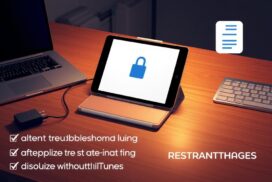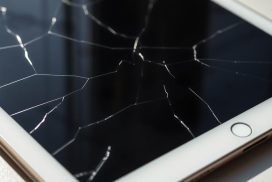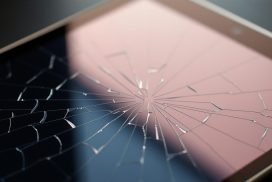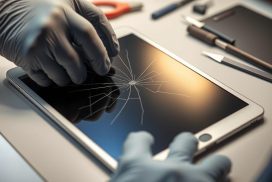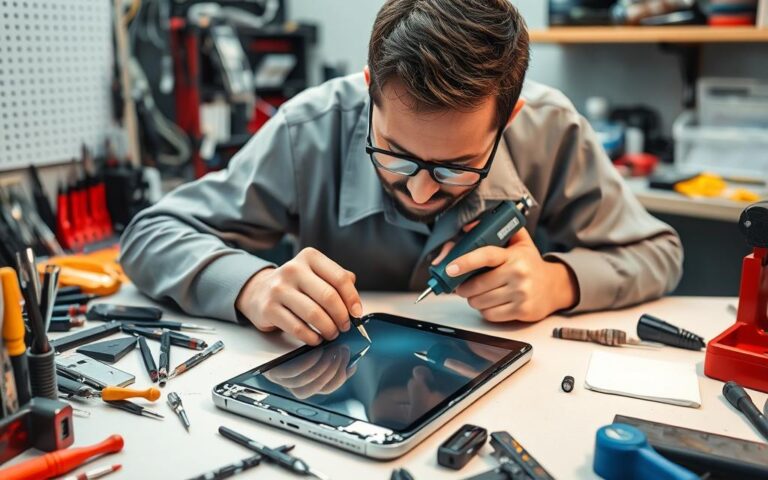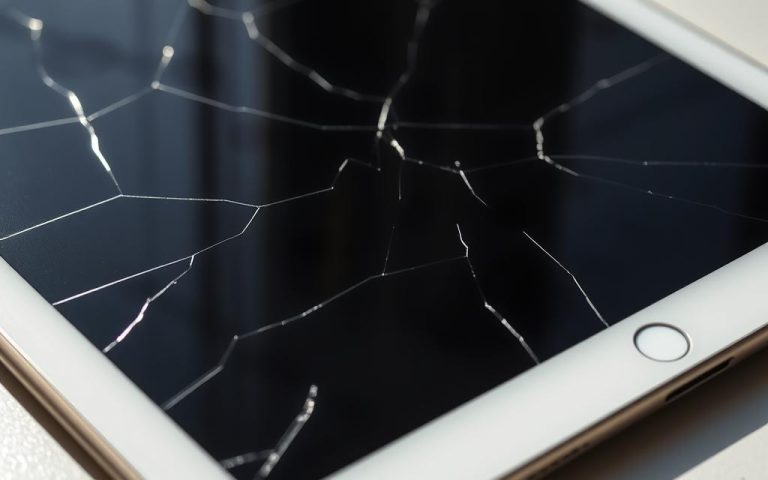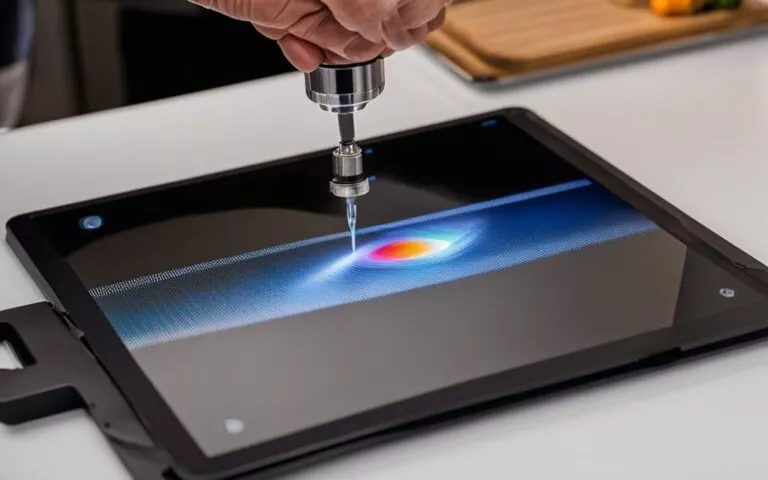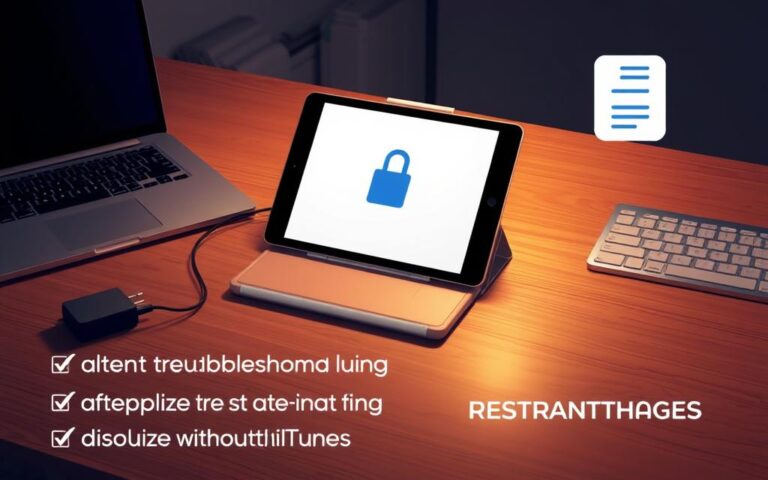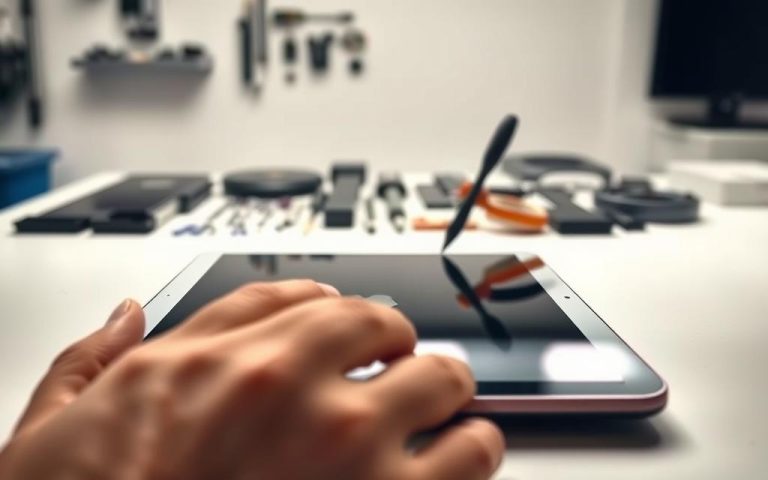iPad Air Water Damage Recovery Steps
Accidents happen, and if your beloved iPad Air has suffered water damage, it may seem like all hope is lost. However, by taking the right steps in the recovery process, you can increase the chances of salvaging your device. This section will guide you through the crucial recovery steps to restore your iPad Air after water damage.
Water damage can wreak havoc on electronic devices, and the iPad Air is no exception. Once exposed to water, immediate actions need to be taken to minimize the damage. To ensure the best chance of recovery, it is important to act quickly and follow the correct procedures.
First and foremost, remove your iPad Air from the water as soon as possible. Use a clean, dry cloth to gently dry off the device, being careful not to spread any moisture further. If your iPad Air was submerged, remove the SIM card tray and gently shake or blow on the device to help water escape.
Next, turn off your iPad Air to prevent any potential short-circuits. It is crucial to avoid using or charging the device until it has completely dried out to reduce the risk of further damage.
Once you have dried off your iPad Air, find a cool, dry room to let it sit for 24-48 hours. This will allow the remaining moisture to evaporate. It’s essential not to rush the drying process, as turning on your iPad Air too soon may cause irreversible damage.
The recovery steps outlined in this section provide a foundation for salvaging your water-damaged iPad Air. However, keep in mind that each situation is unique, and there might be instances where professional assistance is needed. Stay tuned for the next sections, where we will explore repair options and preventive measures to avoid water damage.
Immediate Actions to Take when iPad is Wet
If your iPad gets wet, it’s important to act quickly to prevent further damage. Taking immediate actions can significantly increase the chances of saving your device. Follow these steps to effectively handle water damage to your iPad.
1. Remove from Water and Dry
The first thing you should do when your iPad gets wet is to remove it from the water source. Carefully lift the device out of the water, ensuring not to shake it or move it too vigorously.
Remember, time is crucial in preventing water damage. The longer your iPad stays in contact with water, the higher the risk of permanent damage.
Once you’ve removed the iPad from water, use a clean and dry cloth to gently wipe off any excess moisture. Pay close attention to the ports and buttons, ensuring they are thoroughly dried.
2. Remove the SIM Card Tray and Shake
If your iPad was submerged in water, it’s important to remove the SIM card tray. This will help facilitate the removal of any trapped water within the device.
Use caution when removing the SIM card tray to avoid causing any additional damage. Once the tray is removed, gently shake the iPad or use a soft blow to assist in water drainage.
3. Turn Off and Prop Up to Dry
After removing the excess water, it’s essential to turn off your iPad. Press and hold the power button until the slider appears, then swipe it to power off the device.
Next, find a cool, dry room and prop up your iPad in a way that allows air to circulate around it. Placing the device on a clean, lint-free cloth or towel can help absorb any remaining moisture.
Leave your iPad to dry for a minimum of 24-48 hours. Avoid the temptation to turn it back on during this time, as doing so may cause further damage.
By following these immediate actions, you increase the likelihood of saving your water-damaged iPad. However, it’s important to note that water damage can be unpredictable, and there is no guarantee of a full recovery. If your iPad does not function properly even after drying, it may be necessary to seek professional repair services or consider a replacement.
iPad Air Water Damage Repair Options
If your iPad Air has been exposed to water and is not turning on or is experiencing issues, there are repair options available to restore its functionality. The first option is to take your iPad to an Apple Store or an authorized service provider. At these locations, skilled technicians can assess the extent of the water damage and provide repair or replacement solutions tailored to your device.
Another option is to seek professional repair services from companies that specialize in water damage repair for iPads. These third-party repair shops often have extensive experience dealing with water-damaged devices and can offer a range of repair options depending on the severity of the damage.
If your iPad Air has suffered water damage, it is crucial to act quickly to prevent further damage and increase the chances of successful repairs.
These repair options provide a convenient and reliable way to restore your water-damaged iPad Air. Whether you choose to visit an Apple Store or an authorized service provider or opt for professional repair services, it is essential to consult with experts who have the necessary expertise in handling water damage issues for iPads.
By exploring these repair options, you can effectively address water damage and potentially salvage your iPad Air, saving you the cost of purchasing a new device.
Remember, time is of the essence when dealing with water damage, so be sure to take action promptly to maximize your chances of a successful repair or replacement.
Prevention Tips for Water Damage
To prevent water damage to your iPad, it is important to take proactive measures and avoid exposing it to water in the first place. By following these preventive tips, you can protect your iPad and reduce the risk of water damage.
1. Use a Waterproof Case or Sleeve
Investing in a waterproof case or sleeve for your iPad is an excellent way to shield it from accidental exposure to water. These protective accessories are designed to provide a waterproof barrier, safeguarding your device from liquid damage. Make sure to choose a case or sleeve that is compatible with your specific iPad model for optimal protection.
2. Keep Your iPad Away from Liquids
Avoid using your iPad in close proximity to liquids, such as beverages, sinks, or pools. Accidents can happen, and even a small spill or splash can cause significant water damage. Create a habit of keeping your iPad at a safe distance from liquids to minimize the risk of exposure.
3. Be Cautious Near Water Sources
When using your iPad near water sources, such as in the kitchen or bathroom, exercise caution to prevent accidental water damage. Always be mindful of your surroundings and ensure that your iPad is kept at a safe distance from sinks, baths, showers, or any other water-related activities.
4. Avoid DIY Drying Methods
In the event that your iPad does come into contact with water, it is crucial to avoid using DIY drying methods that may do more harm than good. Contrary to popular belief, placing your device in rice is not an effective solution for drying out water-damaged electronics. Instead, opt for professional-grade alternatives such as silica gel packets, which are specifically designed to absorb moisture and aid in the drying process.
By following these prevention tips, you can significantly reduce the risk of water damage to your iPad and ensure its longevity. Remember, prevention is always better than dealing with the aftermath of water damage.
Conclusion
In conclusion, water damage to an iPad can be a serious issue, but with the right actions, it is possible to recover the device. By following the immediate steps to remove the iPad from water, drying it thoroughly, and allowing it to air out in a cool, dry room, users can increase the chances of salvaging their water-damaged iPad Air.
If the iPad does not turn on or experiences issues after water exposure, there are repair options available. Taking the device to an Apple Store or authorized service provider allows trained technicians to assess the damage and explore repair or replacement possibilities.
Prevention is key to avoid water damage in the first place. Using a waterproof case or sleeve, keeping the iPad away from liquids, and exercising caution when using the device near water sources can significantly reduce the risk of water-related incidents. It is also important to note that DIY drying methods like rice may not be effective and using silica gel packets is a better alternative.
While in most cases, following these steps ensures successful recovery, there are instances where irreparable damage may occur. In such situations, users may need to consider replacing the iPad or seeking professional repair services specialized in water damage cases. Swift action and professional assistance are crucial when dealing with water damage to electronic devices like the iPad.
FAQ
What should I do if my iPad Air gets wet?
If your iPad gets wet, it’s important to act quickly. Remove the iPad from the water immediately and dry it off with a clean, dry cloth. If the device was submerged, remove the SIM card tray and gently shake or blow on the iPad to help water escape. Then, turn off the iPad and prop it up in a cool, dry room for 24-48 hours to allow it to fully dry out.
What if my iPad Air does not turn on or has issues after being exposed to water?
If your iPad Air does not turn on or has issues after being exposed to water, there are repair options available. One option is to take your iPad to an Apple Store or authorized service provider, where technicians can assess the damage and explore repair or replacement options. Another option is to seek professional repair services from companies specializing in water damage repair for iPads.
What preventive measures can I take to avoid water damage to my iPad?
To prevent water damage to your iPad, it is important to avoid exposing it to water in the first place. Some preventive measures include using a waterproof case or sleeve, keeping the iPad away from liquids, and being cautious when using the iPad near water sources. Additionally, avoiding DIY drying methods such as rice and using silica gel packets instead can help prevent further damage.
Can I recover my water-damaged iPad Air?
Yes, it is possible to recover a water-damaged iPad Air by following the immediate steps, exploring repair options, and taking preventive measures. However, in some cases, irreparable damage may occur, and replacement or professional repair services may be necessary. It is always important to act quickly and seek professional assistance when dealing with water damage to electronic devices.


